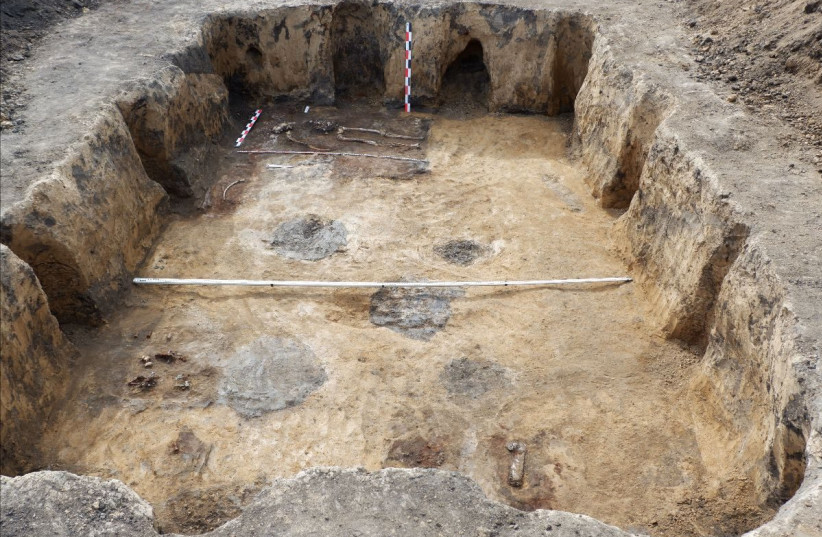An ancient Scythian silver plate depicting several deities was discovered in a grave in western Russia, shedding new light onto the equestrian-based, nomadic empire that encompassed Central Asia and parts of Eastern Europe and existed as far back as the 8th century BC until the second century AD.
The plate was found in a necropolis in the Ostrogozhsky District of Russia's Voronezh region and was comprised of 19 burial mounds. The site, known as Devitsa V, was discovered in 2000 by an expedition named the Don Expedition of the Russian Academy of Science's Institute of Archaeology, and its excavation began in 2010. The finding was published independently by the Institute on November 19.
The excavation of the mound in question, mound 7, revealed a wooden tomb constructed out of 17 large oak pillars that date back to the 4th century BC. The archaeologists found in the tomb the skeleton of a man aged 40-49 and a number of other artifacts, but the most notable discovery was the silver plate, measuring 34.7 cm by roughly 7.5 cm. The plate depicts several deities, first among them the goddess Artimpasa, who was generally associated with fertility, power over sovereignty and the priestly force, as well as being an androgynous goddess of warfare, fecundity and vegetation.
Artimpasa was the Scythian variant of an Iranian goddess that the ancient Greek historian Herodotus equated with Aphrodite Urania, an epithet of the Greek goddess Aphrodite that refers to her higher, more spiritual aspects. She is presented on the plate surrounded from both sides with the figures of winged eagle-headed griffins.

The archaeologists suggested that this implicated a cultural mix of traditions between Asia Minor (the goddess herself) and Ancient Greece (the griffins). These types of mixed representations were found many times during the excavations of other Scythian areas, indicating a religious synthesis between its geographical neighbors - the Persian empire to the southeast and the Greek/Roman empires to the west.
“The finding has made an important contribution to our concepts of Scythian beliefs," said the head of the Don expedition, Prof. Valeriy Gulyaev. "Firstly, a particular number of gods are depicted at once on one item. Secondly, it has never happened before that an item with depicted gods has been found so far from the northeast of the main Scythian centers," she said.
In addition to the silver plate and other small gold semi-sphere plates, they found an iron knife, a horse rib, a spearhead and three javelins. Adjacent to the burial the team also discovered horse harnesses, six bronze plates in the shape of wolves, the jawbone of a young bear, a molded cup, and several black-glazed vessels.
